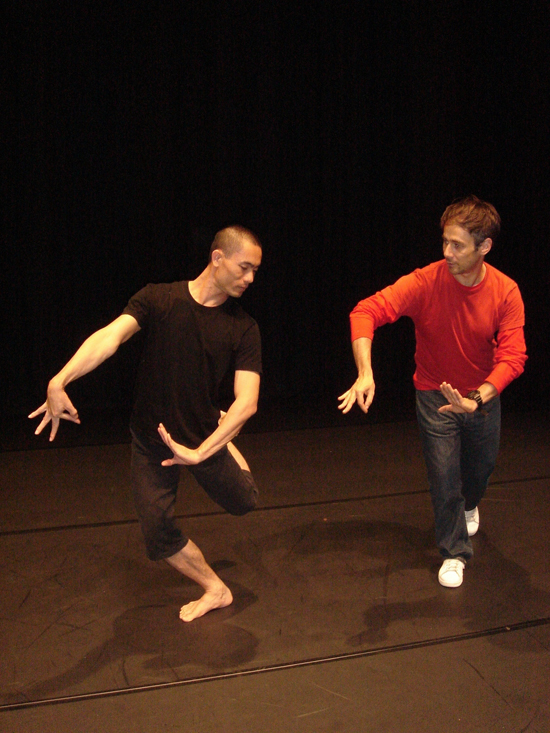Gabriele Brandstetter
Director
Gabriele Brandstetter is co-director of the International Research Centre "Interweaving Performance Cultures" and Professor of Theatre and Dance Studies at Freie Universität Berlin since 2003. She is also vice-president of „Heinrich-von-Kleist-Society“, a member of „German National Academy of Sciences Leopoldina“ and a jury member for „art history, musicology, theatre-, film- and media-studies“ of the DFG. Her research focus is on: history and aesthetics of dance from the 18th century until today, theatre and dance of the avant-garde; performance, theatricality and gender differences; concepts of body, movement and image. In 2004 she was awarded the “Gottfried-Wilhelm-Leibniz-Prize” by the DFG, and in 2011 the Federal Cross of Merit of the Federal Republic of Germany. Among her numerous book publications: Tanz-Lektüren. Körperbilder und Raumfiguren der Avantgarde (1995); ReMembering the Body (2000, co-ed. H. Völckers; Bild-Sprung. TanzTheaterBewegung im Wechsel der Medien (2005); Methoden der Tanzwissenschaft. Modellanalysen zu Pina Bauschs ‚Sacre du Printemps‛ (2007, co-ed. G. Klein); Schwarm(E)Motion. Bewegung zwischen Affekt und Masse (2007, co-eds. B. Brandl-Risi, K. van Eikels), Tanz als Anthropologie (2007, co-ed. C. Wulf) , Prognosen über Bewegungen (2009, co-eds. S. Peters, K. van Eikels); Improvisieren. Paradoxien des Unvorhersehbaren. Kunst - Medien – Praxis (2010, co-eds. H.-F. Bormann, A. Matzke).
THIS AUTHOR WROTE
June 1, 2011

In my paper, I would like to look at dance as an art form within the context of intercultural encounters. Discourses on dance often betray an underlying assumption that dance is universal and can be understood by anyone, everywhere - dance as a global player! But even just a cursory glance at the history and the diversity of forms in different cultures reveals that dance performs culturally specific, regional, and local conceptions of the body, of interaction, and of rhythmic staging. On the one hand, dance performances invite (kinesthetic) identification and an inclusive participation; on the other, they can also induce experiences of difference, exclusion, or transgression. What experience, what specific knowledge is embodied in dance, dance techniques, and choreographic performances? To what extent does this describe a "knowledge of the human being" that can be portrayed only performatively - through body movements, interactions, and space-time-models?

 In my paper, I would like to look at dance as an art form within the context of intercultural encounters. Discourses on dance often betray an underlying assumption that dance is universal and can be understood by anyone, everywhere - dance as a global player! But even just a cursory glance at the history and the diversity of forms in different cultures reveals that dance performs culturally specific, regional, and local conceptions of the body, of interaction, and of rhythmic staging. On the one hand, dance performances invite (kinesthetic) identification and an inclusive participation; on the other, they can also induce experiences of difference, exclusion, or transgression. What experience, what specific knowledge is embodied in dance, dance techniques, and choreographic performances? To what extent does this describe a "knowledge of the human being" that can be portrayed only performatively - through body movements, interactions, and space-time-models?
In my paper, I would like to look at dance as an art form within the context of intercultural encounters. Discourses on dance often betray an underlying assumption that dance is universal and can be understood by anyone, everywhere - dance as a global player! But even just a cursory glance at the history and the diversity of forms in different cultures reveals that dance performs culturally specific, regional, and local conceptions of the body, of interaction, and of rhythmic staging. On the one hand, dance performances invite (kinesthetic) identification and an inclusive participation; on the other, they can also induce experiences of difference, exclusion, or transgression. What experience, what specific knowledge is embodied in dance, dance techniques, and choreographic performances? To what extent does this describe a "knowledge of the human being" that can be portrayed only performatively - through body movements, interactions, and space-time-models? 








